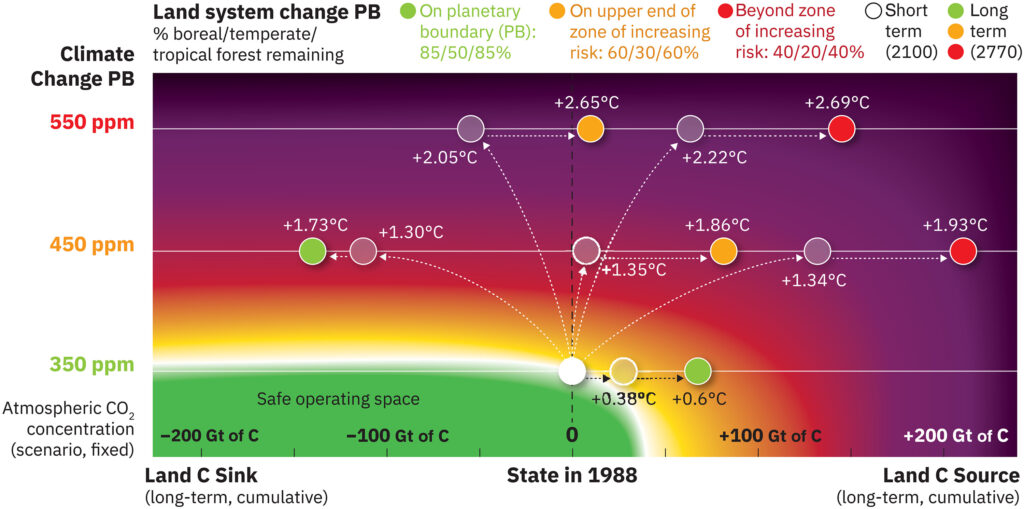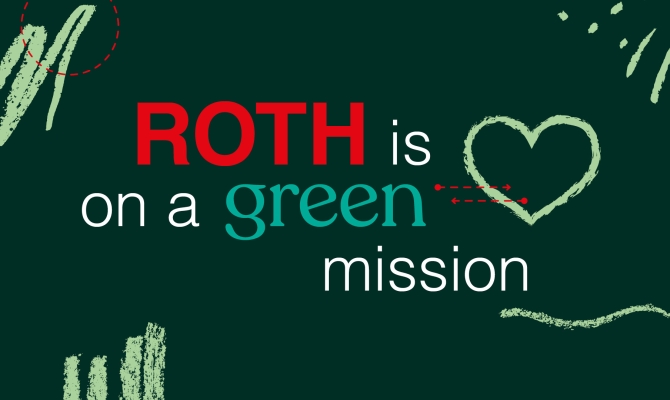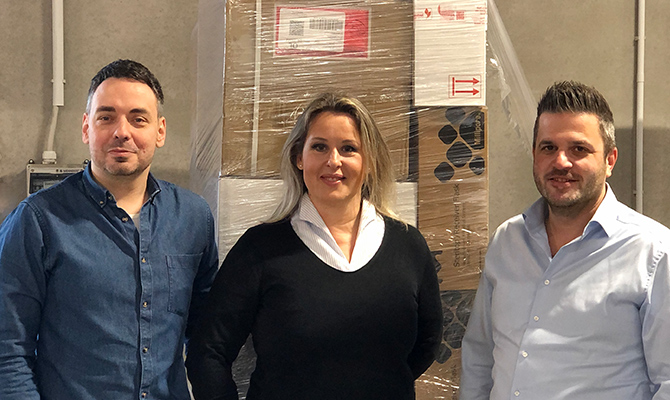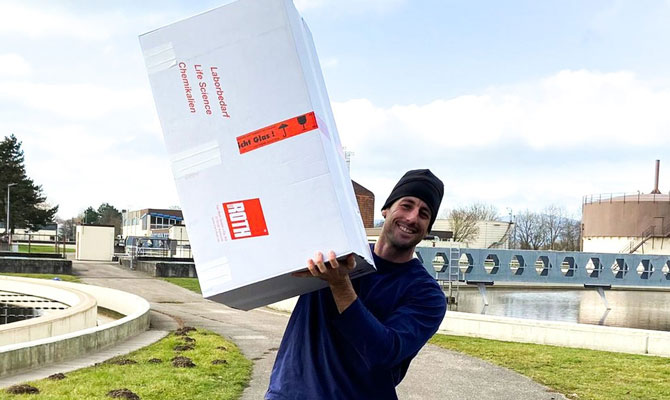
Planetary boundaries: The great equilibrium – Carl Roth
If there is such a thing as an ideal state to strive for at all times, then it is probably that of equilibrium. This applies on a small and large scale, in both the living world and the inanimate world: if a system is in equilibrium, it is stable and resilient. Conversely, there is danger in imbalance. Science defines “homeostasis” as a state of equilibrium of an open dynamic system that is maintained by an internal, regulating process. This demonstrates that stability does not equate to standing still, and that several mutually interacting factors are always involved in the process of self-regulation. The regulatory processes of a cell should be in balance just like those of an organ, an entire organism, an ecosystem, or the entire world.
But what are the tipping points that disrupt the equilibrium of a cell, an organ, or an ecosystem and put the system at serious risk? Knowing these creates valuable scope for action in order to stop destructive processes and, ideally, restore this equilibrium. This also applies to the greatest of all “patients” – our Earth. Because the Earth is also in grave danger of losing its equilibrium: according to a recent study, the majority of the tipping points that are crucial to the stability of our planet have already been significantly exceeded. What has caused this? Can this process still be stopped? And what will happen if it cannot?
From the Holocene to the Anthropocene
Although Earth has experienced many periods of significant environmental change, conditions on our planet have been unusually stable over the past 10,000 years. During this period of stability, which began after the end of the last ice age, and which geologists call the Holocene (“the whole new”), there were some natural environmental changes which, coupled with the Earth’s ability to regulate, provided conditions that made human development possible: regular temperatures, freshwater availability, and biogeochemical fluxes all remained within a relatively narrow range. Initially, humans did not change the Earth’s biological, geological and atmospheric processes, but since the industrial revolution, a new era has emerged in which human influences have become profound. Researchers across the globe have already characterised these as primarily responsible for global environmental changes – and consequently call our era “the new (age of) humans”: the Anthropocene.
The problem is that the massive human influences seem to be pushing the Earth’s ability to regulate itself to its limits. And this can have catastrophic consequences. As early as 2009, Johan Rockström et al. [1] published the following in a landmark article in Nature: “Although Earth’s complex systems sometimes respond smoothly to changing pressures, it seems that this will prove to be the exception rather than the rule. Many subsystems of Earth react in a nonlinear, often abrupt, way, and are particularly sensitive around threshold levels of certain key variables. If these thresholds are crossed, then important subsystems, such as a monsoon system, could shift into a new state, often with deleterious or potentially even disastrous consequences for humans.” The researchers referred to current studies that have investigated the existence of such nonlinear, abrupt changes in the state of entire ecosystems and the danger they pose [2,3]. For example, if a monsoon system shifts to an unbalanced state, there is a risk of droughts and problematic heavy rainfall, which affects agricultural land, natural ecosystems, and with these the livelihoods of billions of people [4]. The melting of the Arctic sea ice and the Greenland ice sheet are also examples of systems that, according to the researchers, react particularly sensitively near tipping points, and are therefore at risk of abrupt nonlinear reactions [3]. Melting polar ice would not only result in a dramatic rise in sea level, but could also disrupt ocean currents and ecosystems, for example in the North Sea, and in turn impact entire climate systems.
Therefore, the most important question is the one we asked right at the start: Can this process still be stopped?

The nine pillars of stability
In order to keep the Earth in a Holocene-like state in today’s Anthropocene, i.e. in a self-regulating geoglobal equilibrium, Rockström et al. outlined a framework in the aforementioned publication based on “planetary boundaries”. These boundaries, established by certain thresholds, are intended to define the safe space for humanity to operate in relation to the Earth system, which would both protect the Earth’s interglacial state and safeguard its resilience. To do this, they used an intuitive “traffic light system” in which green stood for the stable Holocene state, amber for an increasing risk to the planetary boundary threshold values, and red for a system that was massively at risk due to these boundaries being significantly exceeded. Rockström’s researchers defined nine sub-areas: biosphere integrity, climate change, introduction of novel entities, stratospheric ozone depletion, atmospheric aerosol loading, ocean acidification, modification of biochemical flows, change in freshwater use, land-system change.
These nine boundaries all represent components of the Earth system critically affected by anthropogenic activities and relevant to Earth’s overall state. For each of the boundaries, control variables were chosen to capture the most important anthropogenic influence at the planetary level. The interactions of the individual disruptions and the resulting effects on Earth’s overall state should also be taken into account. The latter presented and still represents the greatest challenge due to its enormous complexity.
Since then, researchers around the world have been working on identifying and adapting suitable threshold values. In September 2023, a publication by the research team led by Katherine Richardson and Johan Rockström [5] caused a renewed stir. This re-evaluated the status of all nine boundaries based on current studies, and came to the conclusion that for six of the nine boundaries, the limit values of the green range had already been exceeded. This is a clear indication that Earth may already be well outside the safe operating space for humanity. Furthermore – and this is what is particularly special about this study – the research team simulated the development of Earth using models of the Earth system and the biosphere for several hundred years into the future. They used the phase between the last ice age and the beginning of the industrial revolution as a basis for comparison.
Is our Earth is losing its equilibrium?
For example, the safe space for the biosphere integrity boundary has been significantly exceeded, the team writes in the journal “Science Advances”, highlighting the species extinction rate. The level for the genetic component of this boundary was set at <10 extinctions per million species-years, the maximum extinction rate compatible with preserving the genetic basis of the biosphere’s ecological complexity. In their current publication [2], Richardson et al. set the current actual value for the extinction rate at around >100 extinctions per million species-years, which they say is a conservative estimate. Of an estimated 8 million plant and animal species, around 1 million are threatened with extinction, and more than 10% of the genetic diversity of plants and animals may have been lost in the last 150 years. The genetic component of the biosphere integrity boundary has therefore been markedly exceeded. As concerns the functional component of this biosphere integrity boundary, the researchers set the new threshold value as 10% of the average net primary production (NPP). At 20%, this boundary would enter the high risk zone. According to the researchers, the boundary thus defined had already been exceeded by the late 19th century, a time in which land use accelerated significantly worldwide, with a corresponding major impact on species.
When it comes to climate change too, the planetary boundary has already been significantly exceeded, according to Richardson et al. The annual averages for atmospheric CO2 concentration and the change in radiative forcing were set as control variables in this framework. (Radiative forcing is a force acting on the Earth system from outside that moves this system in a certain direction, for example solar radiation.) Both control variables were retained in the current publication and are set to 350 parts per million (ppm) for atmospheric CO2 and 1 watt per square meter for radiative forcing. Currently, the estimated total anthropogenic effective radiative forcing is 2.91 W/m2 (2022 estimate, relative to 1750), and the atmospheric CO2 concentration is 417 ppm (2022 annual mean marine surface), both of which are outside the safe operating space.
The boundary has also been exceeded in the area of introducing novel entities into the environment – i.e. the introduction of human-made chemical compounds such as microplastics, pesticides, hormonally active substances or nuclear waste. The researchers refer to substances that have not been tested in terms of their harmlessness to the Earth system and set the boundary for such substances at 0%. The planetary boundaries for biochemical flows, which currently takes into account the input of nitrate and phosphate, and the state of the forest cover (land-system change), have also been exceeded. The situation is less critical when it comes to change in freshwater use, both in the consumption of “green” water in agricultural and natural soils or plants as well as “blue” water in rivers, lakes and the like. But here too the planetary boundary has been exceeded, the study says.
Atmospheric aerosol loading is currently still within the safe space, although this boundary is regularly exceeded in some regions, such as South Asia. According to the researchers’ definition, ocean acidification is just in the green zone, as is stratospheric ozone depletion. For the latter, the boundary for the safe operating space has been set at 276 Dobson units (DU), and with a current (2020) global estimate of 284 DU, it is therefore currently in the safe space. This boundary is currently only transgressed over the Antarctic and southern high latitudes, and here only during the three-month Austral spring. It is precisely this kind of development that gives the team hope that other problems can also be reversed, as in the 1990s, the depletion of the ozone layer exceeded the planetary boundary. Global initiatives achieved through the Montreal Protocol have therefore had an impact, and should be an incentive for humans to play a more active role to safeguard the interests of our Earth system.

Opportunities for the future?
Even if a boundary has been exceeded, there are ways to improve the situation, the team emphasises, using the example of reforestation as a potential instrument to reverse global warming. At this juncture, the above-mentioned simulations of the future Earth system and the biosphere also become relevant. These have shown that, in around 1988, anthropogenic activities took both the climate and the land system outside their safe operating space. According to the publication, the simulations show that if the Earth system had remained under the same conditions as in 1988 (350 ppm and 85%/50%/85% of remaining tropical/temperate/boreal forest cover), the temperature over the global land surface would have increased by no more than 0.6 °C in the following 800 years. So, conditions would have remained largely stable, and the temperature would not have increased by more than 1.3 °C compared to pre-industrial times.
If humanity manages to bring the CO2 content of the atmosphere to 450 ppm and uses reforestation to restore the forest cover to 60%/30%/60% of the natural boreal/temperate/tropical cover, and then maintain it, then, according to the scientists’ simulation, global warming can be limited to a mean temperature increase over land of 1.4 °C by the year 2100 and 1.9 °C by around 2800. Even though many climate researchers no longer believe this goal is something that can realistically be achieved, we have a responsibility to future generations, and giving up is not an option!
Sources:
[1] Rockström, J., Steffen, W., Noone, K. et al. A safe operating space for humanity. Nature 461, 472–475 (2009). https://doi.org/10.1038/461472a
[2] Scheffer, M., Carpenter, S., Foley, J. et al. Catastrophic shifts in ecosystems. Nature 413, 591–596 (2001). https://doi.org/10.1038/35098000
[3] Lenton, T. M. et al. Tipping elements in the Earth’s climate system. Proc. Natl Acad. Sci. USA 105, 1786–1793 (2008).
[4] Wang, Y.V., Larsen, T., Lauterbach, S., Andersen, N., Blanz, T., Krebs-Kanzow, U., Gierz, P., Schneider, R. R., Higher sea surface temperature in the Indian Ocean during the Last Interglacial weakened the South Asian monsoon. Proc. Natl Acad. Sci. USA 119 March 1, 2022
119 (10) e2107720119, https://doi.org/10.1073/pnas.2107720119
[5] Richardson, K., Rockström, J. et al. Earth beyond six of nine planetary boundaries. Science Advances, 13 Sep 2023, Vol 9, Issue 3, https://www.science.org/doi/10.1126/sciadv.adh2458





